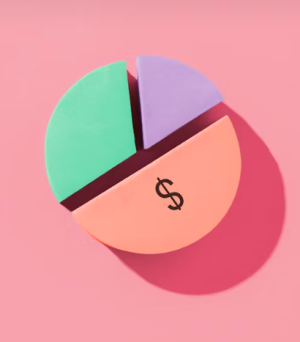The 1% Rule: This surprisingly simple trick could save you hundreds and help you outsmart impulse spending for good!
- Replies 0
Have you ever stood in line with something in your cart you didn’t plan to buy, only to feel that twinge of regret later? If so, you’re far from alone.
Impulse spending is one of the biggest ways people unintentionally derail their budgets.
But one easy, research-backed trick could change the way you shop for good.
Here’s how the 1% Rule works and why financial experts say it could be the key to better spending habits at any age.
No complicated budgeting apps, no extreme cutbacks—just a pause. For someone with a $50,000 income, that means thinking twice about anything over $500.

This "cooling-off" period helps you avoid decisions fueled by emotion or marketing pressure.
And in a world full of limited-time deals and next-day delivery, slowing down your spending can be a game-changer.
Experts say it’s not about guilt—it’s about clarity. As personal finance coach Bobbi Rebell explains, it’s a helpful way to assess whether a purchase will truly improve your life or just drain your wallet.
If you’re retired, use your annual budget or planned withdrawals instead.
Next, apply the rule to non-essentials only.
Groceries, prescriptions, and bills are needs—this rule is for wants like electronics, designer clothes, or home gadgets.
If a non-essential item costs more than your 1% threshold, take a full day before deciding.
During that time, ask yourself: Will I still want this tomorrow? Does it align with my goals?
Here’s the twist that makes the 1% Rule even more powerful. If you pause and decide not to buy, consider putting that money into savings instead.
Whether it’s for a future trip, a gift to your grandkids, or just peace of mind, you’re giving your future self a meaningful reward. It’s spending with intention, not deprivation.
But a word of caution: this isn't a loophole to justify frequent big purchases. Used too often, the 1% Rule can still lead to overspending.
Rebell notes it should be used sparingly—it's a tool, not a routine.
Think of it as a financial compass to keep you on course, not a permission slip to shop.
Read more:

Have you ever tried the 1% Rule—or another trick that helped you curb impulse buying? Did you make a purchase you now regret, or one you’re glad you waited on? Share your stories in the comments below. Your insight could help someone else make a better money move today.
Impulse spending is one of the biggest ways people unintentionally derail their budgets.
But one easy, research-backed trick could change the way you shop for good.
Here’s how the 1% Rule works and why financial experts say it could be the key to better spending habits at any age.
What is the 1% Rule—and why should you try it?
The 1% Rule is simple: if you’re considering a non-essential purchase that costs more than 1% of your annual income, wait at least 24 hours before buying it. That’s it.No complicated budgeting apps, no extreme cutbacks—just a pause. For someone with a $50,000 income, that means thinking twice about anything over $500.

Enter the 1% Rule: a straightforward budgeting method that’s gaining momentum for a good reason. Image Source: Katelyn Perry / Unsplash
This "cooling-off" period helps you avoid decisions fueled by emotion or marketing pressure.
And in a world full of limited-time deals and next-day delivery, slowing down your spending can be a game-changer.
Experts say it’s not about guilt—it’s about clarity. As personal finance coach Bobbi Rebell explains, it’s a helpful way to assess whether a purchase will truly improve your life or just drain your wallet.
How to use the 1% Rule in your daily life
First, figure out what 1% of your yearly income is.If you’re retired, use your annual budget or planned withdrawals instead.
Next, apply the rule to non-essentials only.
Groceries, prescriptions, and bills are needs—this rule is for wants like electronics, designer clothes, or home gadgets.
If a non-essential item costs more than your 1% threshold, take a full day before deciding.
During that time, ask yourself: Will I still want this tomorrow? Does it align with my goals?
Here’s the twist that makes the 1% Rule even more powerful. If you pause and decide not to buy, consider putting that money into savings instead.
Whether it’s for a future trip, a gift to your grandkids, or just peace of mind, you’re giving your future self a meaningful reward. It’s spending with intention, not deprivation.
But a word of caution: this isn't a loophole to justify frequent big purchases. Used too often, the 1% Rule can still lead to overspending.
Rebell notes it should be used sparingly—it's a tool, not a routine.
Think of it as a financial compass to keep you on course, not a permission slip to shop.
Bonus tip: The 6-to-1 grocery method
Impulse spending doesn’t stop at big items. Even your weekly grocery haul can take a toll. That’s where Chef Will Coleman’s 6-to-1 method comes in:- 6 vegetables
- 5 fruits
- 4 proteins
- 3 starches
- 2 sauces or spreads
- 1 fun treat
Read more:
- A two-week family meal plan for just $70? This mom’s Dollar Tree strategy is making waves
- This simple trick could slash your energy bill by $38 every month—Find out how!
Key Takeaways
- The 1% Rule suggests delaying any non-essential purchase over 1% of your annual income for at least 24 hours to avoid impulse spending.
- For someone earning $50,000, that means pausing before spending more than $500 on a single item.
- Financial experts say this method helps you reflect on purchases without feeling restricted and may encourage redirecting money into savings.
- The 6-to-1 grocery method—buying set amounts of veggies, fruits, proteins, starches, sauces, and one treat—is another practical way to save money and reduce food waste.






